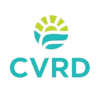Twinned Watershed Project: FULL REPORT – Xwulqw’selu/Koksilah River Environmental Flow Assessment

Over the past number of years water has been elevated to the centre of planning, resource management, and policy discussions. First Nations often refer to water as the life-giving force, as sacred, and as essential for all life. Similarly, western science has described water as the ‘master variable’ in both the distribution and abundance of fish and fish habitat (Poff et al., 1997; DFO 2013). Commensurate with each of these sentiments, water requires a prominent role in policy, regulation, planning, and management if we are to have a sustainable future where the needs of both people and nature are being met (Annear et al., 2004).
Land-use in the Xwulqw’selu Sta’lo (Koksilah River) Watershed has had significant and measurable impacts on the health and condition of the riverscape. The watershed struggles with both extreme flood and extreme drought events, making both people and nature vulnerable to the life-sustaining resources [water] they rely upon. The volume and timing of flows in the Koksilah watershed are altering river condition and adversely impacting both water users (e.g., agriculture, municipal) and water dependents (Quw’utsun Nation People, salmon, trout, wildlife). In recent history, neither people nor nature in the Koksilah Watershed are meeting their environmental flows needs, primarily due to insufficient environmental water at key times.
To address these issues, the Cowichan Watershed Board (CWB) retained Geomorphic Consulting to perform an environmental flow assessment of the lower Koksilah River, which is important rearing habitat for Coho and Steelhead fry along with critical spawning habitat for Chinook salmon.
Download the full document here.
 Email
Email



